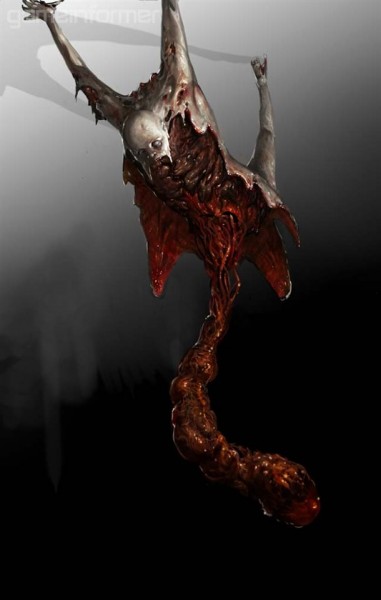Please support Game Informer. Print magazine subscriptions are less than $2 per issue
Dead Space 2: The Evolution Of A Necromorph
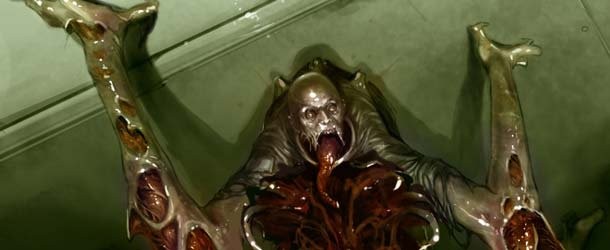
In their quests to save humanity, gamers have squared off against all kinds of monsters, mutants, and zombies. With so many experienced veterans holding the controller, is it possible for game developers to design monsters that can make even survival horror aficionados cower in terror?
Ian Milham, art director on Dead Space 2, guides us through the process of creating one of the new abominations that Isaac will face in the follow-up to the 2008 horror hit. You’ll see the early designs, find out what didn’t work, and see how the process resulted in what players will eventually see in the game.
Remember that most of these designs are from the conceptualization process, and won’t be appearing in the finished product. Even the “final” version may change, given that there is plenty of time between now and the game’s ambiguous future release date.
Also, don’t forget to stop by our Dead Space 2 hub to catch up on any features you may have missed!
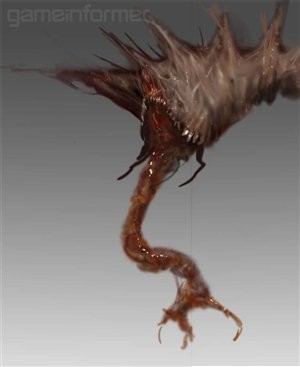
"The original Dead Space did a lot of stuff great, but we also had to fall back on some game design standbys. Like kill doors – eliminate all the enemies and they open. We’re trying to figure out ways to have players slow down and be a part of the world that are organic and logical and not artificial game design. This is an enemy that’s designed to do that. He’s called the Flytrap, and he’s basically half environmental hazard and half enemy. All they told us was that travels along the ceiling and dangles down – lures – to try to snare you. He’s not static – he is a live thing, and he has additional states. First, you’ve got to dismember his lure. That shocks him and gets him on the ground. Then he gets wild, kind of like a fish flopping on the ground, except he’s still dangerous. We’re still playing around with what that means."
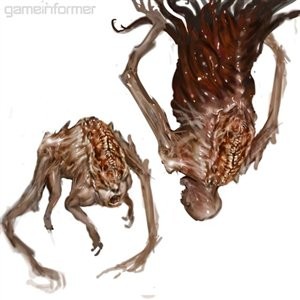
"One of the notions key to Dead Space is that the Necromorphs have an improvised terribleness to them. They’re people that have been broken and twisted into something else, but done so violently and improvisationally. The idea we have is almost like this infection has a plan about what it would like the thing to become, but can’t quite get the body there and makes due with what it is. Instead of teeth, it’ll have bone shards that have broken into teethy things, but they aren’t literally teeth. Instead of wings, it’s stuff that’s been bent backwards and stretched. Some of the problems with the things early on were that they look too evolved. They look like monsters. We don’t want anything that looks like an evolved organism, because that just blows the whole purpose. Here, we’re starting to feel that a little bit more. The mouth isn’t really the mouth; the spine has been split. There’s something interesting there."
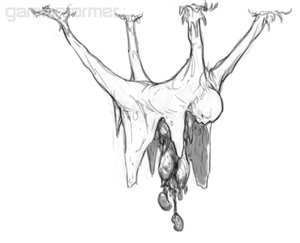
"There’s a certain pathos here, without being so literal. We loved this sketch. We went from there, and started doing a lot of details on him. Remember this sketch for later; somewhere along the road to final, he turned into a goofy monster, and then we went back to this sketch and brought it forward."
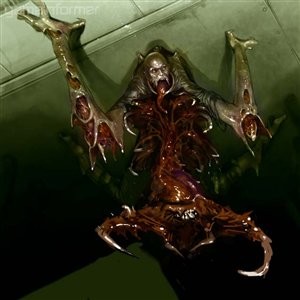
"We started to really feel this one, but it’s getting a bit too far into “Rarr! I’m an evil monster!” The lure is starting to get too thorny and too literal. We really liked the ones that looked more like a sack of guts. I’ve always been much more a literalist on the horror stuff. We’re trying not to get too occult. Not Hellraiser and Candyman."
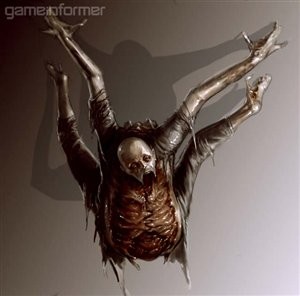
"We’re zeroing in on this. This is what we thought was a final. There are couple aspects this that didn’t work. The arms form an angle; we lost all the magic from the sketch we loved, and we decided it was the slack. This is an evil roof spider, clacking across the ceiling. The sketch was drippy, has loose skin. He would be motivated to move by his wrists marionette-style, rather than “Oooh! I’m comin’ at ya!” like this guy."
"This is the final vibe. It’s interesting – this isn’t a particularly complicated dude when you get down to it. It’s surprising that it would take that long to get back to this, but sometimes you have to go over the edge before you get back to where you need to be."
